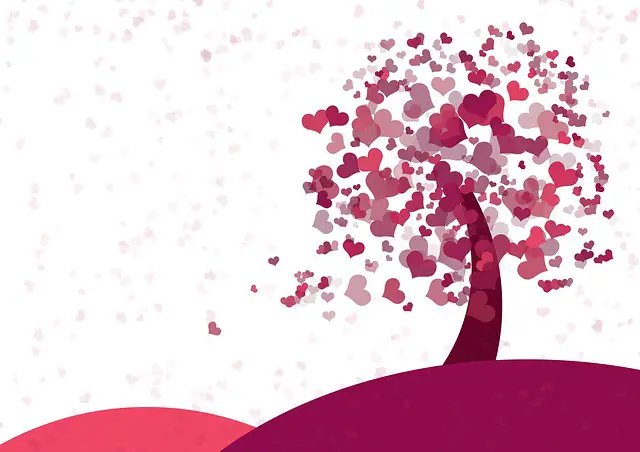All of us experience the strong occurrence of love, maybe it is the gladness of getting a partner or the misery of being rejected.
However, what precisely is love?
Throughout this summary, Helen Fisher a biological anthropologist talks about the way our sense of glamour, sexual urge and connection are the outcomes of our minds. More than giving a deep understanding of love, the author proceeds to describe the way and the reason evolution offered us the capacity to love primarily.

Chapter 1 – The features of enamored love are general.
When we love, it is as if we are living something that is exceptional to us. However, in retrospect beyond cultures and time, there have been signs that everybody experience at the time they are in love.
A popular sign is the importance we assign to the people loved. We turn out extremely concentrated on our loved one, and they invade our feelings, dreams, and behaviors. We see them as unique and perfect and admire them so much that we view all the things about them – including faults and defects – from pink, heart-shaped glasses.
As an instance, the person you love might have goofy teeth, speaking disorder such as a lisp. Though these deficiencies are usually viewed as unappealing, you see their imperfections as a piece of their beauty or uniqueness since they are your beloved one’s.
These senses of love exist in people around the globe.
The studies the author conducted have revealed that these feelings are exactly the same in everybody – regardless of how old they are, in which culture they were born, or the sexual orientation they have.

However, there definitely exist distinctions in the way love is felt across the globe, right?
Certainly; however, anywhere there are distinctions among societies, there are obvious cultural reasons for that. In a study that the author conducted, a lot less American than Japanese contributors concurred with the word “Anytime I am speaking to [my beloved one] I am usually scared that I said an incorrect word.” This might be clarified by the reality that, in the Japanese community, seeing someone of the other gender is more serious and less common than it is in America. hence, this diffidence is a result of culture, instead of love being in another form.
Chapter 2 – Chemical activities of our brains bring about romantic love.
People have thought about what caused love for a long time. Some people believe that it has been a deeply spiritual occurrence; however, contemporary science has confirmed that it’s just an outcome of the chemicals of our brains. Specifically, the reason we love can be explained by three main neurotransmitters namely serotonin, norepinephrine, and dopamine.
One neurotransmitter scholars have discovered to correspond with the sense of enamored love is Dopamine. As a matter of fact, Dopamine is a very strong neurotransmitter in charge of the entire mood, affecting concentration, addiction, and motivation – all significant features of falling in love.
This neurotransmitter assists to explain the reason why is really addictive. Scholars have revealed that at the time you spend time with that special person, you feel something like having a drug such as cocaine. Dopamine overwhelms your brain, supplying you with the sense of pleasure that you would not like to wait for living it again. This has been the reason people who love someone feel reliant on and yearn for those special people – just like how cocaine addicts feel about the substance.

Norepinephrine is the next main neurotransmitter involved, it has impacts that look like dopamines.
The sense of excitement and alertness that come with love –such as butterflies in your stomach or fast heartbeats – has been a result of the production of norepinephrine. However, this neurotransmitter as well brings about unpleasant aspects of love: it is usually difficult to go and remain asleep when we love someone, and a lot of people feel they lost their appetite –and both of these are results of norepinephrine.
Serotonin is the final main love neurotransmitter.
Serotonin causes elevated restlessness and regular thinking about the one you love. However, different from the other 2 neurotransmitters, levels of serotonin are usually lesser when you fall in love. The reason for that is that serotonin levels are reduced at the time the other 2 substances’ levels increase. For this matter, less is better – the less the serotonin level, the higher you become obsessed with the person you love.
Chapter 3 – Together with enamored love, there exist 2 distinct kinds of affection which are attachment and lust.
Throughout the former chapter, we discovered the way brain chemistry plays a role in our sense of enamored love. However, enamor has not been the sole means we feel passion or love. Still, there exist two other kinds of affection which are attachment and lust, senses that are connected with the secretion of certain hormones.
Let’s begin with the last aspect.
Lust can be described as our sexual craving for a person, and it’s as a result of testosterone hormones. The higher the testosterone that’s produced, the more stimulated we get sexually.
Also, we have an attachment, which is the sense of gladness and ease we acquire at the time we are near to the person we love. These senses are related to raised grades of the hormones oxytocin and vasopressin – these are lovingly categorized as the hug substances due to the way they let us feel.
Though all of these kinds of affection are different, they may function in all likely mixtures with one another.

For instance– to say it somewhat coarsely – senses of enamored love may initiate lust. The reason is the increases in the grades of norepinephrine and dopamine neurotransmitters that let love arouse the release of testosterone.
However, this also functions in another way: sexual urge can ultimately cause romantic love. The reason is that the hormonal attachments go either way, and increases in testosterone levels can aid the rise in enamored love neurotransmitters.
Therefore, when next you’re considering sexual intercourse – watch out, it might cause something more!
Chapter 4 – All of us are attracted to proportion, difference, and mystery.
All of us have a different view of our perfect partner: some people prefer them minions, some lengthy, some skinny, some thick. However, there are specific features that nobody may withstand.
One kind of person all of us see as attractive – irrespective of gender – is a person that is different from us.
We consider individuals who are distinct from ourselves mysterious and new, which eventually makes these people more wanted. This urge for different and novel is really inherent in our minds: novelty may lead to higher grades of dopamine neurotransmitter to be produced, which brings about the sense of enamored love.
However, what is the reason why development took us to want the people that are distinct and not resembling?
The answer to this question could be in the association between our immunity structure and genes. Scholars have revealed that at the time 2 parents with unrelated DNA copulate, their kid is at a lower risk of sicknesses and ailment than a kid from 2 people with related DNA. This clarifies the reason we desire individuals who are distinct.
Evidence for this can be seen with the sweaty shirt study, in which females were told to evaluate how sweaty shirts of men smelled. The outcomes show that “the sexiest smelling” usually was of a man that has an immunity that is distinct but still suitable with the evaluator woman.

A different appeal bias that the majority of the individuals have can be defined as the craving for specifically symmetrical partners.
According to statistics, people that have commensurable faces and bodies are considered to be prettier than people with unbalanced bodies. The reason is that when we watch more commensurate bodies, higher dopamine is produced in our brains.
The ratio of hip and waist of women is a different illustration of certain proportions associated with attraction. Researchers have discovered that a top charming feature of women in the eyes of men is this ratio is 70%. Not surprisingly, scholars have also discovered that these measurements are the usuals of the center pages of Playboy!
Chapter 5 – Men have the tendency to judge their mates based on how they look, whereas women seek successful and intelligent men.
We learned from the former chapter, all of us have identical biological chemistry making us experience love. However, this doesn’t signify that both women and men live love in precisely the same manner. As a matter of fact, some key differences have existed between these 2.
A key distinction is the features we search for in the other one.
At times men love women, their brain parts linked with vision are triggered, which is the reason men are usually captivated by a likely partner’s look. This makes men judge partners mainly on the way they appear. Specifically, men search for females who display indications of beauty and youth, such as gentle soft skin.
The reason for these particular signs?
Since signs of beauty and youth specify increased estrogen grades in females – a significant indication of healthy reproduction – which signifies the likelihood for more children. Selecting a partner as a result of their looks signified that males tend to love really fast– some people even say at the initial time they see her.

On the other hand, women think for the long-term, choosing men that may let them be safe.
Women want men who show abilities of success, such as acumen and economic safety. The reason is that females experience pregnancy and giving birth – a lengthy, tiring, and hectic process. Hence, an accomplished man is more attractive since there is more possibility for them to cater for and take care of females throughout this hard time.
Chapter 6 – All of us possess the “lovemap” outlying the features we consider appealing in a partner.
With becoming older, we begin to learn what we most desire in our mates: maybe a huge laugh, colorful eyes or being funny. As this information accrues in time, they grow and turn out to be a lovemap as a guideline: a list inside our insensible brain of every feature we find particularly attractive – such as sexual preferences, the color, or the hair, eye and the kind of personality.
However, what is the origin of the lovemap?
Your specific love map comes from your own individual lives and is hence exclusive for you. No other person will possess the exact kind of tastes and distastes that you have accrued as a result of your exclusive livings. We understand this since studies have revealed that even twins with the same set of principles and concerns would form distinct predilections in love – to sum up, they’ve formed distinct lovemap.

Therefore, what is the lovemap for precisely?
The lovemap is something that directs you to love a certain person.
One thought experiment may describe this. Assuming you enter a place filled with people you do not know. You check around and realize a lot of potential partners –however, probably you will not find all of them attractive. Rather, some of them, or perhaps only one, you will find very attractive. This person is the one that most suits the lovemap inside you.
Chapter 7 – The roots of enamored love may be dated back to three and a half million years ago.
Did you question yourself about the place the concept of enamored love derives from? The response to the question can be seen in the history of evolution.
About three and a half million years earlier, humans made a huge evolutionary change when they begin to walk with two feet. Though, it gave them a lot go benefits, walking upright made mothers carry babies with arms rather than their backs. Also, because there were babies in the arms of mothers, they couldn’t collect food for their families anymore or simply escape from wild animals. This signified that they needed somebody – a partner – to remain with and assist in protecting the children.
This circumstance brought about a primitive kind of enamored love known as serial monogamy, in which partners remained together before proceeding to establish a pair with another person.
What is the reason for serial monogamy?
Humans’ evolutionary ancestors most likely didn’t use their whole lives together –just sufficiently lengthy to raise a kid from infancy; say about four years. Afterward, the couple would then go their different ways and create new pairs with different people. This approach was better for the health of groups genetically since when giving birth to more kids with various people, diversity of genetics would be more diverse.

This advantage coming from serial monogamy might have brought about the advancement of contemporary enamored love.
As couples brought up a kid hand-in-hand, they could have begun forming affection for each other. Although it might have declined for the majority of the Paris at the time their kids reached maturity, it is most possible for other pairs that the adherence inspired them to remain as a couple longer to give birth to further kids. Though the ancient brains of ancestors most likely signified that they could not feel love as we experience it, this development possibly guides us to the intense connections we link with enamored love nowadays.
Chapter 8 – With the growth of humans, our capability for enamored love grew as well.
In the former chapter, we discovered that the initial “humans” to feel enamored love possibly sensed that in a somewhat primitive manner. However, in the course of a historic way, our brains’ intricacy developed, and our ability to feel love evolved.
Nearly 1800000 years earlier, there existed a huge evolutionary growth: the emergence of language which is the ability to express utilizing vocabulary. It is questionable that there has been no better method of expressing enamored love. We may be certain that the initial people’s ability for love grew at the time this novel capacity emerged. With that, they could entice, flatter and tease one another with stories, gossip, and songs – anything just language can do.
As humans kept on their advancement, brain sizes grew as well, which further increased the feeling of love.
Brain’s development was somewhat a result of the advancement of cooking. After knowing how to cook a meal, ancient humans expanded calorie consumption, which permitted the growth of huge, calorie-starved brains. The caudate nucleus is one part of our brains that grew in size, a part connected with the intention to pursue and get rewards. This brought about improved efforts in attempting to attract a suitable partner – and this is most likely the reason for some individuals to do everything to spend time with the person they love.

Also, these new, bigger brains made parents remain together longer.
However, bigger brains signified bigger skulls, which signified more difficulties during childbirth. So that babies could suit the vagina, children needed to come to the world prior to skulls and brains were completely developed. Since children were born with not completely formed brains, they needed to experience a longer phase of childhood prior to catering for themselves. That required couples to remain with one another for longer times and improving the senses of enamored love.
Chapter 9 – Thrilling dates raise relationship fulfillment – and may even initiate love.
All of us understand that enamored love can have tides: on some days you feel very attracted to a person, the next day you feel disconnected and uninterested. Love appears to go with its own principles –however, that’s doesn’t mean it’s not controllable. As a matter of fact, there have been various things one could do to make the flame burning.
Such as practicing novel and thrilling activities.
As previously mentioned, a chemical that triggers the sense of enamored love is dopamine – and it’s produced when we are doing a novel or thrilling thing. This signifies that you may exploit the strength of enthusiasm to form senses of love.

In 1974, this was observed by psychology specialists Donald Dutton and Arthur Aron, who studied how exciting circumstances can stimulate love.
They did a study on 2 bridges: 1 of the bridges was low and stable concrete, the other bridge was a shaky rope across a gate. They told men to go past a bridge where a woman scholar was waiting for men to pass. She then questioned them and then told them to tell her name later when any questions popped up in their minds. The males who passed the risky bridge showed more possibility of telling the name of the scholar later.
What was the reason for that?
Since the exciting condition, they came across had initiated the senses of enamored love.
Sexual intimacy is another method of keeping increased levels of enamored love in long-term relationships.
Sex stimulates the release of testosterone and this may stimulate the production of dopamine. Orgasms as well as give bodies cuddle chemicals like oxytocin for women and vasopressin for men.
Therefore, if you feel your senses for your mate are falling apart– there’s one guaranteed method you may utilize to renew them!
Chapter 10 – Enforce yourself to stay active when you have been rejected.
As the majority of the people understand, there are fewer pains worse than being declined by a person you love. That may make you enervated, and wish to only want to lie around the entire. However, rather than relinquishing yourself, you have to quit lying around with sadness and move on. As a matter of fact, that has been the sole means to lessen the suffering.
What is the reason for that?
Since being active makes you disturbed at the time you disconnect from the person you love.
At the time you are denied, chemical reactions in our brains are very much similar to falling in love desperately: serotonin grades reduce, and you obsessively think about the one who denied you. However, rather than bowing and communicating with your beloved, you need to remain powerful and stay away from them to disconnect – the assistance of lots of disturbance will help you!

What is the way to do that?
Just similar to individuals from AA mention “from day to day”. Say to yourself you will not get in touch with the one you love today, and remain busy, for instance, by hanging out. Only devoting yourself to continue with the responsibilities and tasks of daily life, from doing the laundry to commuting to the office, will make you busy and assist you to evade.
Another advantage of staying active is improving your mood.
As seen, novel experiences produce dopamine, doing novel and thrilling things, such as skateboarding, bungee jumping or rock climbing will assist you to handle your negative emotions.
Exercise as well as help to raise serotonin grades, and psychiatrists mention that moving your body can be like antidepressant medications or psychotherapy in curing depression.
Therefore, when you are feeling depressed, stand up, do sports, and you will begin feeling better immediately!
Why We Love: The Nature and Chemistry of Romantic Love by Helen Fisher Book Review
As we understand, romantic love has developed all through our history of advancement. By exploiting our understanding of love’s science, we may wake the enamored glitter up and handle the unfavorable senses of denial.
Download Pdf
https://goodbooksummary.s3.us-east-2.amazonaws.com/Why+We+Love+by+Helen+Fisher+Book+Summary.pdf
Download Epub
https://goodbooksummary.s3.us-east-2.amazonaws.com/Why+We+Love+by+Helen+Fisher+Book+Summary.epub
